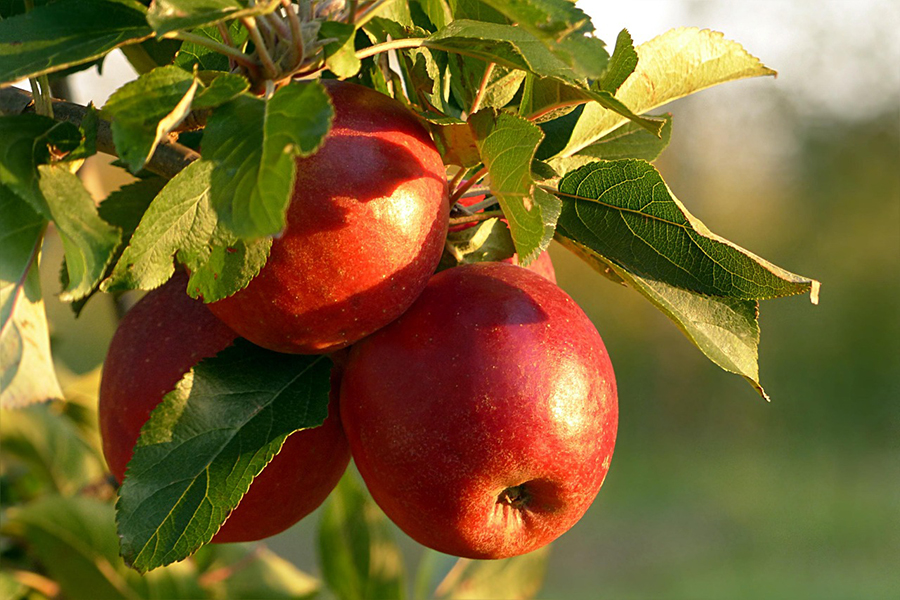Summer pruning apples and pears allows sunlight to ripen the fruit and ensures good cropping the following year. This is the main method of pruning for restricted forms such as cordons, espaliers, fans and pyramids.
When to prune
Summer prune when the bottom third of the new shoots is stiff and woody. Generally, this will be from late-July for pears and mid- to late August for apples and about ten days later in the north. To reduce the possibility of secondary growth it can be delayed until Sptember, when larger terminal (end)
A bud is a small, undeveloped shoot that contains the potential for new growth. Buds are typically found on stems, where they can be apical (found at the tip) or axillary (found between leaf axils) and may develop into leaves, shoots or flowers.buds have formed at the shoot tips and the shoots have stopped growing.
Judge the exact timing according to the vigour of the plant, the weather and locality.
How to prune
Summer pruning involves cutting back new shoots to allow light to reach the fruit.
New shoots are stiff and woody along their bottom third, with dark green leaves and a cluster of leaves at the base.
- Cut back new shoots (laterals) more than 20cm (8in) long growing from the main stem to three leaves above the basal cluster of leaves. Do not prune new shoots that are less than 20cm (8in) long as they usually terminate in fruit buds
- Cut back new shoots growing from existing sideshoots (sub-laterals) to one leaf above the basal cluster
- Remove any upright, vigorous growth completely
- If secondary growth occurs after summer pruning, prune back any re-growth in September (or October if pruning later) to one leaf beyond the previous cut.
- If this is a persistent problem, leave some longer shoots unpruned as these will draw up the Sap is a fluid that circulates through a plant’s vascular system, in a similar way to blood moving through our veins. Phloem sap carries the sugars produced in the leaves by photosynthesis down to roots and other storage organs, as well as carrying minerals and hormones. Xylem sap is watery and transports nutrients absorbed by the roots upwards to the rest of the plant. Some plants leak sap from wounds or pruning cuts, and this is known as bleeding.sap and grow at the expense of secondary growth elsewhere. Cut these back to one A bud is a small, undeveloped shoot that contains the potential for new growth. Buds are typically found on stems, where they can be apical (found at the tip) or axillary (found between leaf axils) and may develop into leaves, shoots or flowers.bud in spring, as well as any vigorous growth projecting above the level of the supporting wire
Problems
Although pruning shouldn’t cause any particular problems for the plant, you may see some other common issues:
Apple canker
Apple canker is a fungal disease causing disfiguring and sunken patches of dead bark on the branches of apple and some other trees. Infections often begin at wounds or buds.
Apple scab and pear scab
Apple scab and pear scab are two fungal diseases that cause dark, scabby marks on the fruit and leaves of apples, pears and some other ornamental fruits. They are so similar that they are dealt with in the same way.
Fruit: biennial bearing
Biennial bearing is a problem in some fruit trees, particularly apples and pears, where they crop heavily in one year and then produce little or nothing the next. Some cultivars are naturally biennial but weather conditions and soil fertility can contribute to the problem.
Fruit: protecting from frost
Most top fruit and soft fruit are very hardy but once they start into growth in spring, flowers and buds are especially vulnerable to frost and may need protection to crop well.
First appeared on RHS and was republished with permission.
